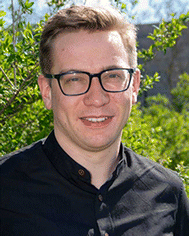Materials Horizons Emerging Investigator Series: Dr Mateusz Odziomek, Max Planck Institute of Colloids and Interfaces, Germany
Abstract
Our Emerging Investigator Series features exceptional work by early-career researchers working in the field of materials science.
Mateusz Odziomek completed his PhD with Distinction between the École Normale Supérieure (ENS) de Lyon and the University of Science and Technology AGH in Kracow. Following this, he spent two years as Maître de Conférences Associé at Collège de France in Paris with Prof. Clément Sanchez. During both periods, his research centered on developing 2D and 3D functional porous materials based on metal oxide colloids for applications in energy, sensing, and optics. In 2021, he joined Prof. Markus Antonietti at the Max Planck Institute of Colloids and Interfaces in Potsdam, where he received a Humboldt Fellowship in 2022. Since 2023, he has been a group leader at the same institute, focusing on nanoporous carbon-based materials for catalysis and electrocatalysis. He is a laureate of the Minister of Science and Higher Education in Poland for academic merits, and has a START scholarship for outstanding scientific achievement from the Foundation for Polish Science and Prix Hugot of Fondation Hugot du College de France for academic merits.
Read Mateusz Odziomek's Emerging Investigator Series article ‘Revisiting the phosphonium salt chemistry for P-doped carbon synthesis: toward high phosphorus contents and beyond the phosphate environment’ ( https://doi.org/10.1039/D4MH00293H ) and read more about him in the interview below:
MH: Your recent Materials Horizons Communication reports a one-step synthesis of P/N-doped carbonaceous materials using urea and THPC as the N and P sources. How has your research evolved from your first article to this most recent article and where do you see your research going in future?
MO: I've always found nanoporous materials fascinating: their voids are actually ‘full’ of potential. Once a substance enters the pores, it dramatically alters its physcochemical properties, compared to the bulk. Throughout my scientific career, I've worked with various nanoporous materials, from silica to metal oxides, and researched them for different applications in sensors, optics, and electrocatalysis. In recent years, I've concentrated on a specific set – nanoporous carbon materials. They have a unique combination of properties: nanoporosity and conductivity, dendrimental for (electro)catalysis. My ambition is to continue developing carbocatalysis to replace often scarce and toxic transition metals, and thus to contribute to a more sustainable future.
MH: What aspect of your work are you most excited about at the moment?
MO: It is truly enriching to work in such a dynamic environment as the Max Planck Institute of Colloids and Interfaces, where I am surrounded by colleagues who share my passion for science. As a group leader, I have the unique opportunity to gain new knowledge and pass it on to younger scientists. It is rewarding to help them develop their scientific careers and witness their progress as we work together to solve problems.
MH: In your opinion, what are the most important questions to be asked/answered in this field of research?
MO: I think there is still a lot of work to do to fully grasp carbocatalysis, especially under applied electrochemical bias. We lack a comprehensive understanding of the reactions occurring at the (electro)catalyst surface, the surface evolution upon polarization and links between energy storage and (electro)catalysis. However, I am optimistic that we are on the right track to identify the appropriate chemical environment to realize the full potential of carbocatalysis. The advances in oxygen reduction reactions and hydrogenation reactions have shown that carbon-based catalysts can outperform metal-based ones. There must be a reason why nature chose carbon atoms as the main building blocks for the most efficient machines ever made – living organisms, including us.
MH: What do you find most challenging about your research?
MO: Most definitely, performing structural characterization. This is because porous carbonaceous materials exhibit highly disordered structures and only local ordering, making it difficult to correlate performance with structural features. In this sense, porous carbons are not a single material, but the spectrum of materials. In our featured paper, we used NMR studies to better understand the chemical environment of phosphorus atoms, but we still lack insight into the organization of the carbon itself.
MH: In which upcoming conferences or events may our readers meet you?
MO: I will be participating in the 22nd International Sol–Gel Conference in Berlin from September 1st–6th and the 75th Annual Meeting of the International Society of Electrochemistry in Montreal. Come meet me. I am always happy to discuss science!
MH: How do you spend your spare time?
MO: I enjoy spending time with my family – I have a daughter who is three. I like to play chess, but most of all I need some physical activity to clear my head after work, so I run and go to the gym. The latest discovery was kickboxing and it might become a new addiction!
MH: Can you share one piece of career-related advice or wisdom with other early career scientists?
MO: I am convinced that all scientists should find their own path to thrive; it is not very fruitful to compare yourself to others. What it really takes to navigate this winding path is constant passion. If you keep the passion alive, it will lead you to your goals. But remember: “It's all about the journey, not the destination.”.
| This journal is © The Royal Society of Chemistry 2024 |

